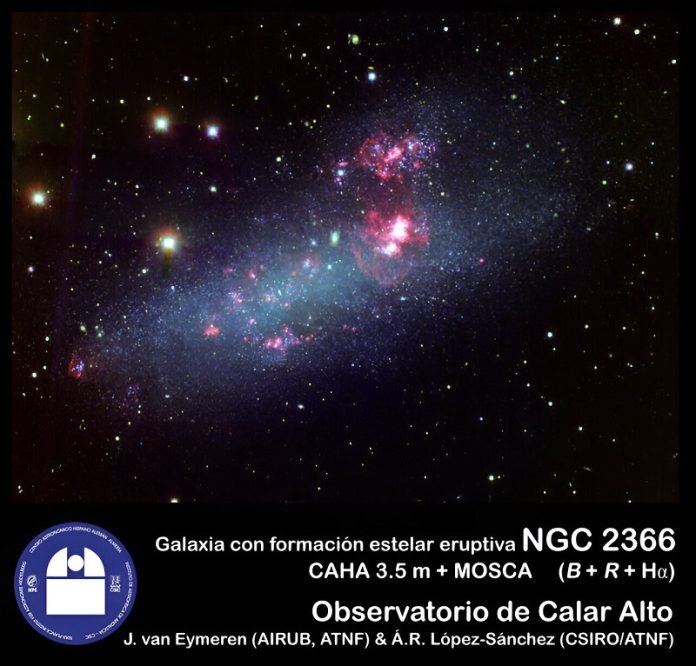
Researchers at the University of Michigan have made a fascinating discovery about dwarf galaxies.
Contrary to what we might think when we see massive galaxies filled with stars, it’s actually the smaller, less evolved dwarf galaxies that are the real star-making powerhouses.
These dwarf galaxies, which are smaller and less complex than galaxies like our Milky Way, have an interesting advantage.
They experience a delay of about 10 million years before they push out the gas and dust in their environment.
This delay allows these regions to hold onto their gas and dust longer, giving more stars a chance to form.
In these dwarf galaxies, very massive stars—those 20 to 200 times the mass of our sun—often end up collapsing into black holes instead of exploding as supernovae.
In larger, more ‘polluted’ galaxies like ours, these massive stars are more likely to explode, creating a strong wind that blows gas and dust out of the galaxy and puts a quick stop to star formation.
This research, published in the Astrophysical Journal, sheds light on how the metal content (or ‘metallicity’) of a galaxy affects star formation.
Michelle Jecmen, the lead author of the study, explains that in galaxies with low metallicity, or those that are less polluted, there’s a longer delay before these strong winds begin.
This delay leads to more star formation.
The scientists refer to the Hubble tuning fork, a diagram used by astronomer Edwin Hubble to classify galaxies.
At the handle of this fork are the largest, round, star-filled galaxies that have converted all their gas into stars.
Along the prongs are spiral galaxies like the Milky Way, which still have some star-forming gas. At the very end of the prongs are the smallest, least evolved galaxies—the dwarf galaxies.
What’s particularly interesting about these dwarf galaxies is their “mondo” star-forming regions. According to U-M astronomer Sally Oey, senior author of the study, the new findings provide a clear explanation for why these galaxies keep forming stars: they struggle to blow away their gas.
Additionally, this delay in blowing out gas offers a unique opportunity for astronomers. It allows them to study scenarios similar to the cosmic dawn, the period right after the Big Bang.
In these early galaxies, gas clumps together, creating gaps that let ultraviolet (UV) radiation escape, a phenomenon known as the “picket fence” model.
UV radiation is crucial as it ionizes hydrogen, which is what happened right after the Big Bang, turning the universe from opaque to transparent. Jecmen points out that studying these low-metallicity dwarf galaxies with high UV radiation is akin to looking back to the cosmic dawn.
In a related study published in the Astrophysical Journal Letters, the team used the Hubble Space Telescope to observe Mrk 71, a region in a nearby dwarf galaxy. They found evidence supporting Jecmen’s theory.
In Mrk 71, where stars are not exploding in supernovae, energy is radiated away instead of forming a hot superwind. This allows dense gas to remain, fostering star formation.
The findings have significant implications. “Our findings may also be important in explaining the properties of galaxies that are being seen at cosmic dawn by the James Webb Space Telescope,” says Oey.
Understanding these processes helps us to better grasp the complex story of how galaxies, and indeed our universe, have evolved over time.



